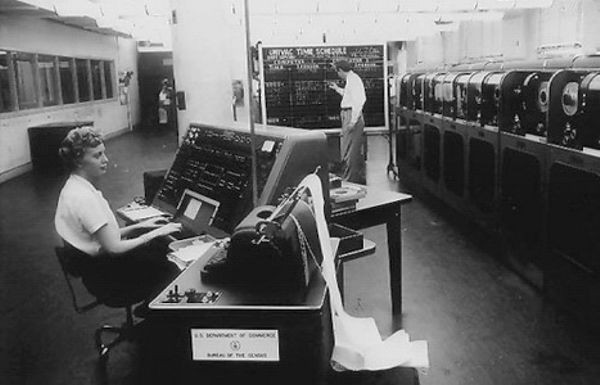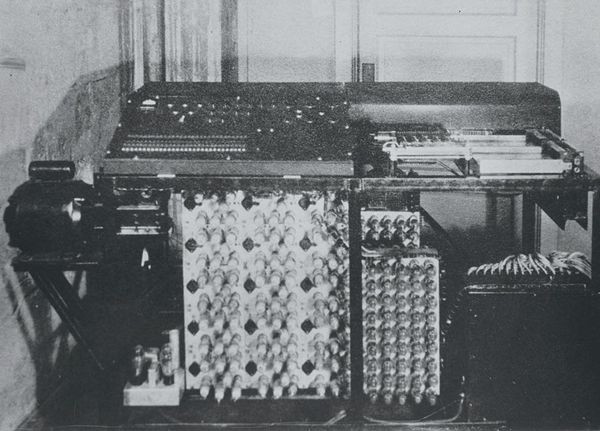On This Day in Tech History
Stories Published June 14 Throughout History
Historic Tech Events
The US Census Dedicated the UNIVAC I Computer

The UNIVAC I was a revolutionary computer system that changed the course of computing history. Developed by J. Presper Eckert and John Mauchly of the Eckert–Mauchly Computer Corporation, the UNIVAC I was the first commercially available computer in the United States. It was built using vacuum tubes and magnetic tape for data storage and was capable of processing 1,000 operations per second. The first UNIVAC I was installed at the United States Census Bureau in 1951, where it was used to process the 1950 census data. This made headlines around the world and attracted widespread public attention as the first computer capable of handling large-scale data processing. It was an impressive accomplishment that demonstrated the potential of computers to automate tasks that had previously been done by humans. In addition to its use in the census, the UNIVAC I was used for a variety of other applications, including scientific calculations, military simulations, and business data processing. Its success paved the way for further advancements in computing technology and helped establish the computer as an essential tool for modern society.
Mauchly Met Atanasoff in a Historic Meeting

John Mauchly and John Atanasoff were both pioneers in the field of computing and made significant contributions to the development of the electronic digital computer. However, their meeting in Iowa City would eventually lead to a lengthy and bitter legal battle over who should be considered the legal inventor of the electronic digital computer. In 1941, John Mauchly visited John Atanasoff at Iowa State University to see his computer, which he had been working on for several years. Atanasoff's computer, called the Atanasoff-Berry Computer (ABC), was the first electronic digital computer and laid the foundation for modern computing. Mauchly was impressed by Atanasoff's work and later went on to develop the Electronic Numerical Integrator and Computer (ENIAC), which is often credited as the first general-purpose electronic digital computer. Mauchly and his colleague J. Presper Eckert were awarded a patent for the ENIAC in 1947 and went on to found the company that became known as Sperry Rand Corporation.
The Disneyland Monorail Opened in California
The Disneyland Alweg Monorail System was officially launched on June 14, 1959, in Anaheim, California. The timing of the launch was impeccable, as it coincided with the re-dedication of Tomorrowland, a popular section of Disneyland, which underwent a significant renovation. The expansion of Tomorrowland included the addition of several new attractions, such as the iconic Matterhorn Bobsleds, the Submarine Voyage, an expanded version of Autopia, and the Motor Boat Cruise. The Disneyland Monorail System was the first daily operating monorail in the United States and the first to be built by the Alweg company, a German-based engineering firm. The monorail was a revolutionary form of transportation that provided visitors with a futuristic experience as they glided along a single rail track above the park. The Alweg Monorail System was a huge success, and its popularity led to the expansion of the monorail system to other Disney parks, such as Walt Disney World in Florida and Tokyo Disneyland in Japan. The Disneyland Alweg Monorail System is a symbol of Disneyland's commitment to innovation and technological advancement in the entertainment industry.
Fischer Jr. Patented the Sandpaper in Vermont
Isaac Fischer Jr. was an American inventor who is credited with inventing sandpaper. Fischer was born in Springfield, Vermont, in 1807, and grew up in a family of inventors. His father, Isaac Fischer Sr., was a prolific inventor who held several patents for various inventions. Isaac Fischer Jr. initially worked in his father's workshop, where he learned the skills of woodworking and metalworking. In 1834, he received a patent for his invention of a machine for cutting and shaping files. This invention was a significant improvement over the traditional method of hand-filing, which was slow and laborious. However, Fischer's most significant invention was sandpaper, which he patented in 1834. The idea for sandpaper came to Fischer when he was working on a project that required a smooth surface. He realized that he could use abrasive materials, such as sand or glass, to smooth out surfaces. He experimented with different materials and eventually settled on using finely ground sand glued to a piece of paper.
The Second Continental Congress Created the US Flag Design
The Second Continental Congress did not specifically meet to create the US flag with stars and stripes, but it did play a role in the design and adoption of the flag. During the American Revolution, the Continental Army used various flags to represent their cause, including the Continental Colors which featured thirteen alternating red and white stripes and a union flag with the British Union Jack in the upper left corner. However, as the colonies moved towards independence, there was a desire for a new flag that represented the united colonies and their new nation. On June 14, 1777, the Second Continental Congress passed the Flag Resolution, which established the design of the first official national flag of the United States. The resolution stated: "That the flag of the thirteen United States be thirteen stripes, alternate red and white; that the union be thirteen stars, white in a blue field, representing a new constellation." While the exact designer of the flag is unknown, the design itself is often attributed to Francis Hopkinson, a member of the Second Continental Congress who was also a skilled designer and artist.
A Large Asteroid Missed Hitting the Earth
In 2002, an asteroid named 2002 MN, with a diameter of about 73 meters, came closer to Earth than the Moon. Specifically, it was about one-third of the distance between the Earth and the Moon at its closest approach. The exact distance of the asteroid's closest approach is not given, so we cannot calculate it precisely. The asteroid was first discovered three days after its closest approach, which means that astronomers did not know about it before it came close to Earth. The reason for this is that the asteroid was relatively small and dark, making it difficult to detect using telescopes. If an asteroid of this size were to impact Earth, it could cause significant damage in the local area, but it would not be a global catastrophe. Fortunately, the chances of such an impact are relatively low, and scientists are continually monitoring the skies for any potential threats
The US Sent a Monkey on a Historic Rocket Flight
On June 14, 1949, the United States sent a monkey on a historic flight aboard a V2 rocket. The monkey, named Albert II, was the first primate to reach space, although tragically he did not survive the flight. The flight was part of the US Army's effort to study the effects of high altitude on living organisms, which was a critical issue in the early days of the Space Race. The V2 rocket, originally developed by Nazi Germany during World War II, was captured by the United States at the end of the war and adapted for scientific research. Albert II's flight was the second of its kind. The first primate flight was made by another monkey, Albert I, on June 11, 1948, but he did not survive the launch due to a parachute failure. Unfortunately, Albert II suffered a similar fate when his parachute failed to deploy properly on re-entry, and he died on impact. Despite the tragic outcome, Albert II's flight provided valuable data that helped pave the way for future space missions, including those that eventually sent humans into orbit. Today, his sacrifice is remembered as an important milestone in the history of space exploration.
2025
2024
2023
2022
2021
2020
2019
2018